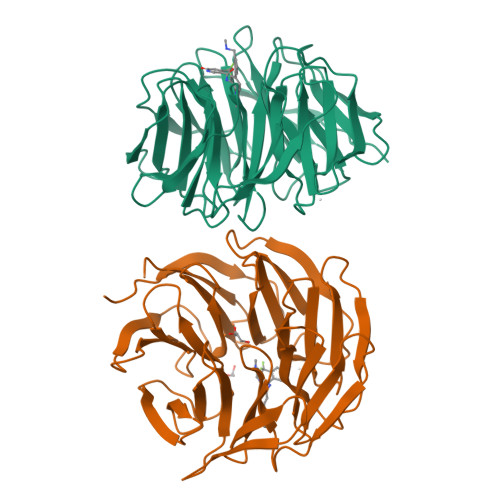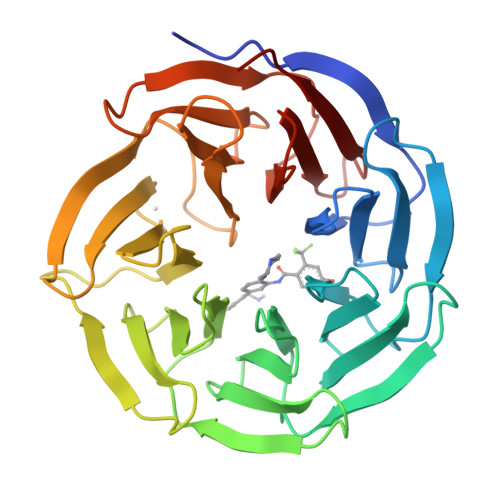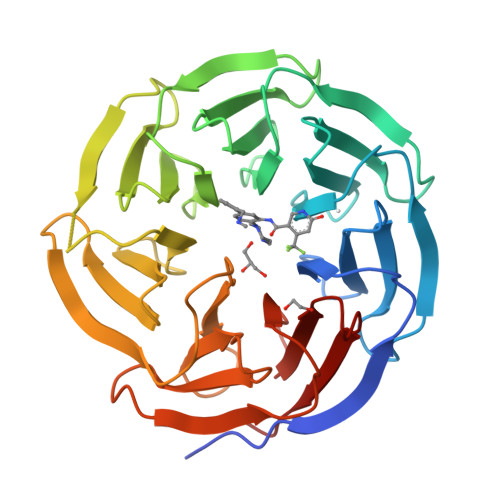Pharmacological targeting of the Wdr5-MLL interaction in C/EBP alpha N-terminal leukemia.
Grebien, F., Vedadi, M., Getlik, M., Giambruno, R., Grover, A., Avellino, R., Skucha, A., Vittori, S., Kuznetsova, E., Smil, D., Barsyte-Lovejoy, D., Li, F., Poda, G., Schapira, M., Wu, H., Dong, A., Senisterra, G., Stukalov, A., Huber, K.V., Schonegger, A., Marcellus, R., Bilban, M., Bock, C., Brown, P.J., Zuber, J., Bennett, K.L., Al-Awar, R., Delwel, R., Nerlov, C., Arrowsmith, C.H., Superti-Furga, G.(2015) Nat Chem Biol 11: 571-578
- PubMed: 26167872
- DOI: https://doi.org/10.1038/nchembio.1859
- Primary Citation of Related Structures:
4QL1 - PubMed Abstract:
The CEBPA gene is mutated in 9% of patients with acute myeloid leukemia (AML). Selective expression of a short (30-kDa) CCAAT-enhancer binding protein-α (C/EBPα) translational isoform, termed p30, represents the most common type of CEBPA mutation in AML. The molecular mechanisms underlying p30-mediated transformation remain incompletely understood. We show that C/EBPα p30, but not the normal p42 isoform, preferentially interacts with Wdr5, a key component of SET/MLL (SET-domain/mixed-lineage leukemia) histone-methyltransferase complexes. Accordingly, p30-bound genomic regions were enriched for MLL-dependent H3K4me3 marks. The p30-dependent increase in self-renewal and inhibition of myeloid differentiation required Wdr5, as downregulation of the latter inhibited proliferation and restored differentiation in p30-dependent AML models. OICR-9429 is a new small-molecule antagonist of the Wdr5-MLL interaction. This compound selectively inhibited proliferation and induced differentiation in p30-expressing human AML cells. Our data reveal the mechanism of p30-dependent transformation and establish the essential p30 cofactor Wdr5 as a therapeutic target in CEBPA-mutant AML.
Organizational Affiliation:
CeMM Research Center for Molecular Medicine of the Austrian Academy of Sciences, Vienna 1090, Austria.





















